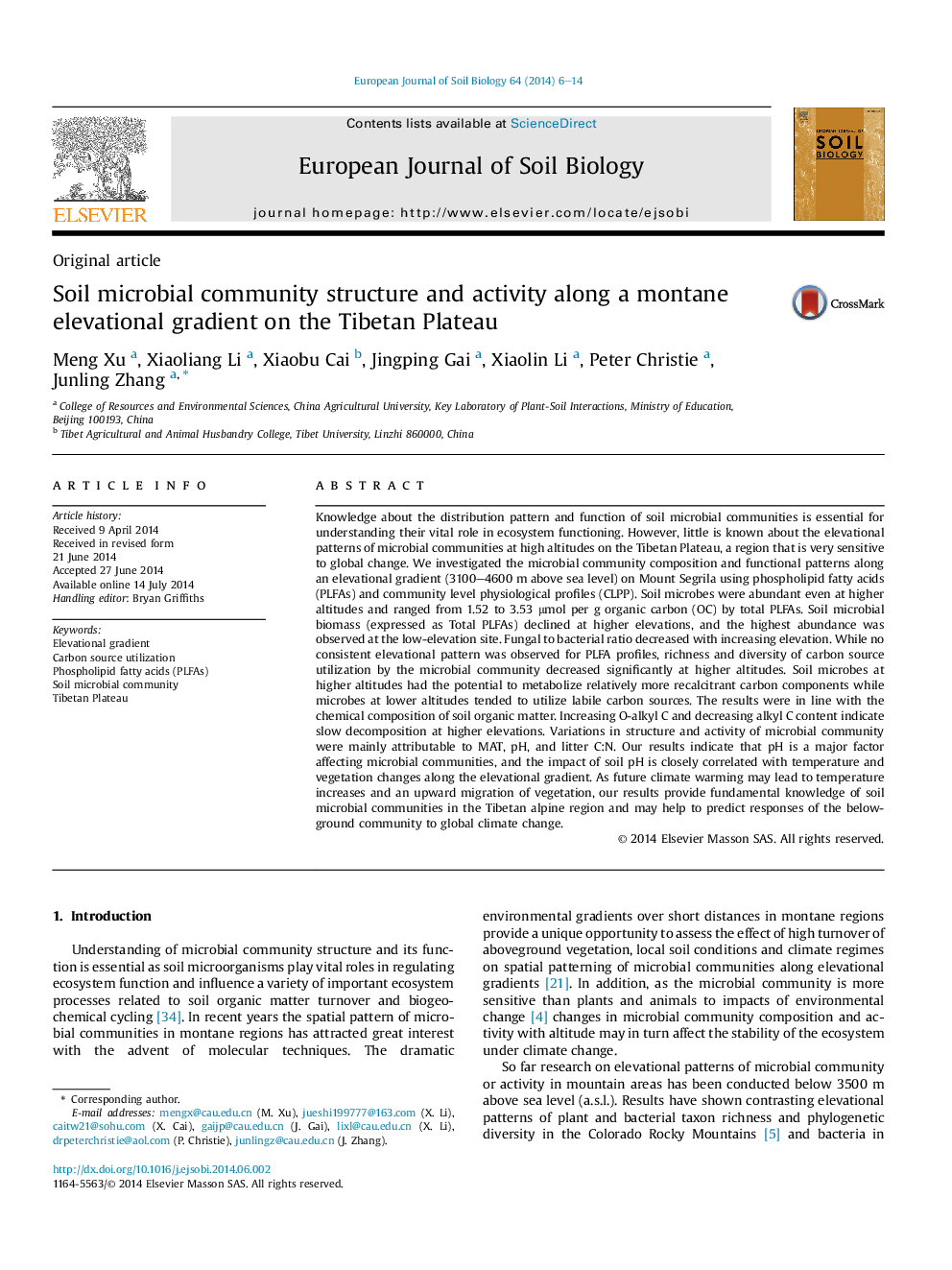| کد مقاله | کد نشریه | سال انتشار | مقاله انگلیسی | نسخه تمام متن |
|---|---|---|---|---|
| 4391794 | 1618128 | 2014 | 9 صفحه PDF | دانلود رایگان |
• Soil microbes were abundant even at alpine region on the Tibet with high altitude.
• There are distinctive patterns of carbon sources used by microbes at studied sites.
• Soil pH is a major factor affecting structure and activity of microbial community.
• Our results provide valuable insight into soil microbes in Tibetan alpine region.
Knowledge about the distribution pattern and function of soil microbial communities is essential for understanding their vital role in ecosystem functioning. However, little is known about the elevational patterns of microbial communities at high altitudes on the Tibetan Plateau, a region that is very sensitive to global change. We investigated the microbial community composition and functional patterns along an elevational gradient (3100–4600 m above sea level) on Mount Segrila using phospholipid fatty acids (PLFAs) and community level physiological profiles (CLPP). Soil microbes were abundant even at higher altitudes and ranged from 1.52 to 3.53 μmol per g organic carbon (OC) by total PLFAs. Soil microbial biomass (expressed as Total PLFAs) declined at higher elevations, and the highest abundance was observed at the low-elevation site. Fungal to bacterial ratio decreased with increasing elevation. While no consistent elevational pattern was observed for PLFA profiles, richness and diversity of carbon source utilization by the microbial community decreased significantly at higher altitudes. Soil microbes at higher altitudes had the potential to metabolize relatively more recalcitrant carbon components while microbes at lower altitudes tended to utilize labile carbon sources. The results were in line with the chemical composition of soil organic matter. Increasing O-alkyl C and decreasing alkyl C content indicate slow decomposition at higher elevations. Variations in structure and activity of microbial community were mainly attributable to MAT, pH, and litter C:N. Our results indicate that pH is a major factor affecting microbial communities, and the impact of soil pH is closely correlated with temperature and vegetation changes along the elevational gradient. As future climate warming may lead to temperature increases and an upward migration of vegetation, our results provide fundamental knowledge of soil microbial communities in the Tibetan alpine region and may help to predict responses of the belowground community to global climate change.
Journal: European Journal of Soil Biology - Volume 64, September–October 2014, Pages 6–14
